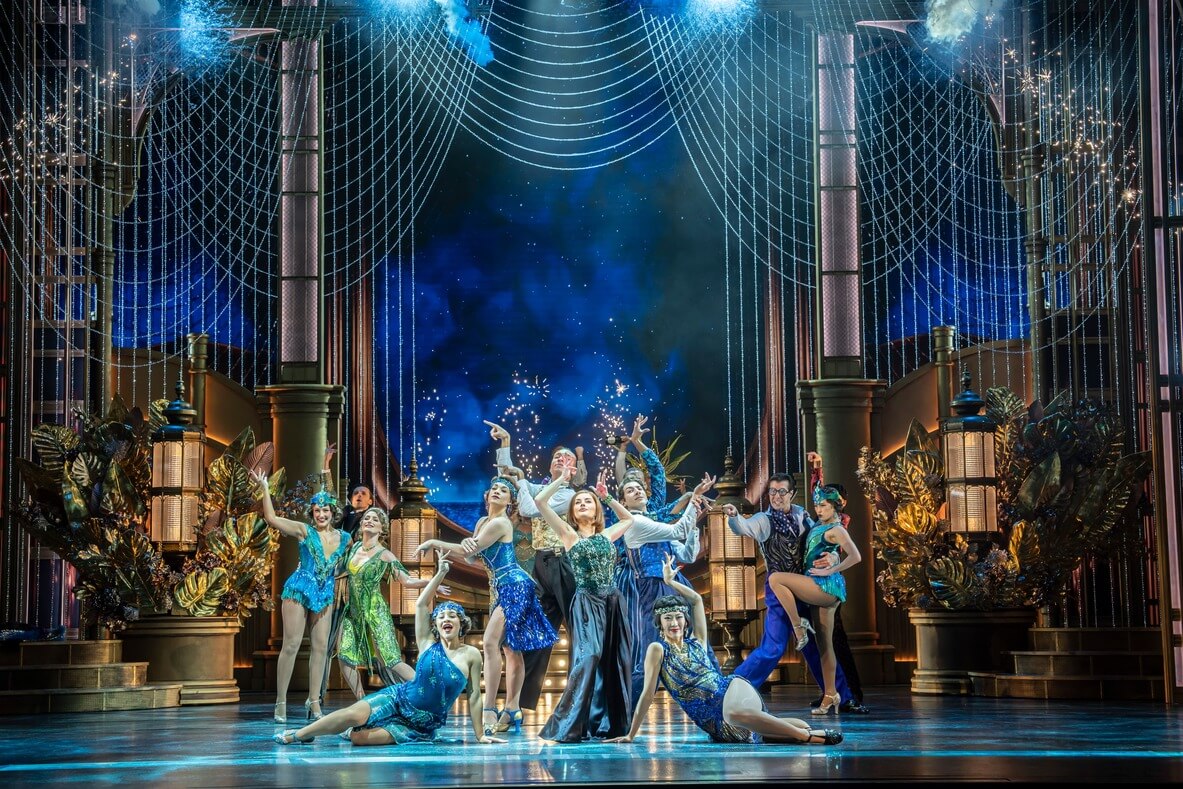I say bravely, it’s not actually as brave as if you or I were to publicly open our hearts like this, for Mark in an actor by profession. And he’s very much an actor. Were you to spot him, say, queuing for a coffee you would immediately think “that’s an actor”. He has a resonant voice, he has thick, swept back hair and is a handsome guy in his fifties who dresses like a 20-something down-with-the kids drama teacher in the 1990s. As I entered he was at the auditorium door fawning over a theatre critic then bouncing around the place inviting people to hang their coats up like an ebullient dinner party host.
But why should he make any attempt to disguise his inherent theatricality? This is after all his own personal history and he is unashamedly himself in the telling of it, everything he reveals can be viewed with the understanding that he loves being the centre of attention. No one buys his fake nervousness and humility at the beginning of the evening. We all know he’s been enjoyably performing the same rehearsed routine for months around the country.
At first his narrative tricks are a little too studied and self-conscious, like the sudden vocal swoops from speaking softly to yelling and back again; but as the evening settles down you can’t help but warm to him and you certainly can’t help being intrigued by his tale.
There is no scenery, effects, costume or lighting, it’s just a skilled performer telling his story directly to us. As this story is all there is to the short evening it would be wrong of me to reveal too much and spoil the ride (although he’s told much of it to the press already to publicise the show).
I will tell you that the trouble started when he believed he’d met the devil in a field near Strafford-upon-Avon. As characterised by Lockyer’s sick mind during his mental illness and now relayed to us, the devil is a swaggering Californian who unsettlingly switches back and forth between charm, bravado and icy focus. He is a recurring, imaginary companion as Lockyer descends deeper and deeper into violent, selfish and abusive behaviour. His painful journey to recovery is also described but in less detail than his descent.
I’d have liked a little more science now that he’s well enough to look objectively at his mental illness. What was happening to his brain back then? What were the drugs and how do they influence the psyche?
And only an actor would consider a judge’s appreciation of his career and a return to the RSC as a satisfactory outcome of the story. Does he have no further reflections on how his relationships with the loved ones he abused have developed, or how his experiences have changed his perspectives on himself, his profession and mental illness?
Ultimately this is a brave and shocking story that needs to be told if we’re to understand who may be standing within pushing distance of us on a tube platform as the train hurtles into the station.
I emerged from the show scared about what may be going on in the minds of people around me. This is one occasion when demystifying the taboo of mental illness made it more not less terrifying.

 Alone on a brightly lit stage for an hour and fifteen minutes Mark Lockyer bravely relates his real-life, horrific descent into manic depression, which resulted in the attempted incineration of an entire building of vulnerable people. It’s the stuff of nightmares, even of horror films.
Alone on a brightly lit stage for an hour and fifteen minutes Mark Lockyer bravely relates his real-life, horrific descent into manic depression, which resulted in the attempted incineration of an entire building of vulnerable people. It’s the stuff of nightmares, even of horror films.


 One of the greatest books about theatre and theatre people ever written is Moss Hart’s autobiography ACT ONE. In it he hilariously and vividly charts the progress of his play ONCE IN A LIFETIME from conception to Broadway hit thanks to re-writes made in collaboration with another legend of 1930s and 40s theatre George S Kaufman. It’s intoxicating and persuasive in the book but unfortunately, on stage, by modern standards it’s neither funny as a satire of Hollywood’s Golden age or emotionally engaging as the story of three friends from vaudeville theatre who try their luck in the early talking picture Industry.
One of the greatest books about theatre and theatre people ever written is Moss Hart’s autobiography ACT ONE. In it he hilariously and vividly charts the progress of his play ONCE IN A LIFETIME from conception to Broadway hit thanks to re-writes made in collaboration with another legend of 1930s and 40s theatre George S Kaufman. It’s intoxicating and persuasive in the book but unfortunately, on stage, by modern standards it’s neither funny as a satire of Hollywood’s Golden age or emotionally engaging as the story of three friends from vaudeville theatre who try their luck in the early talking picture Industry.